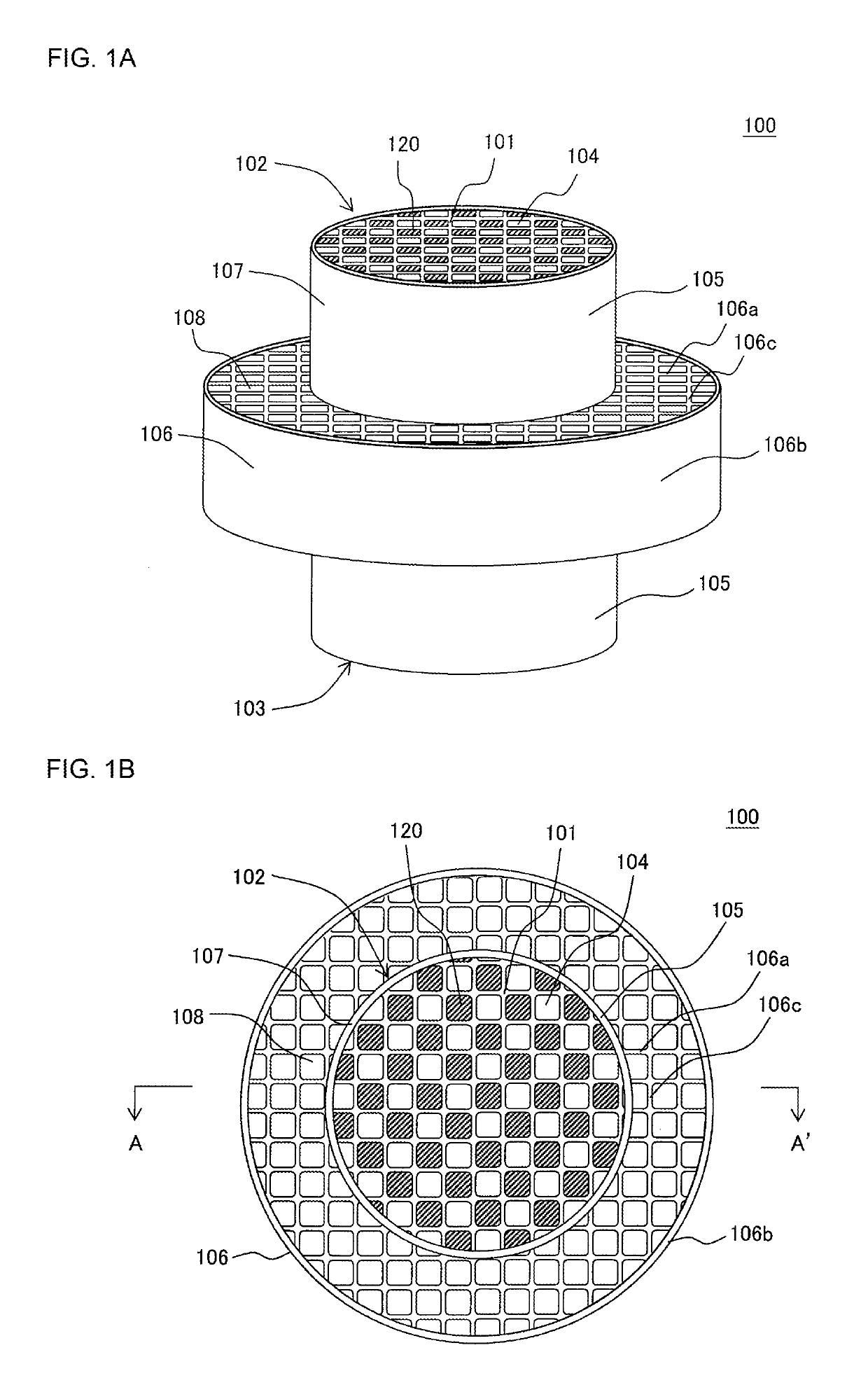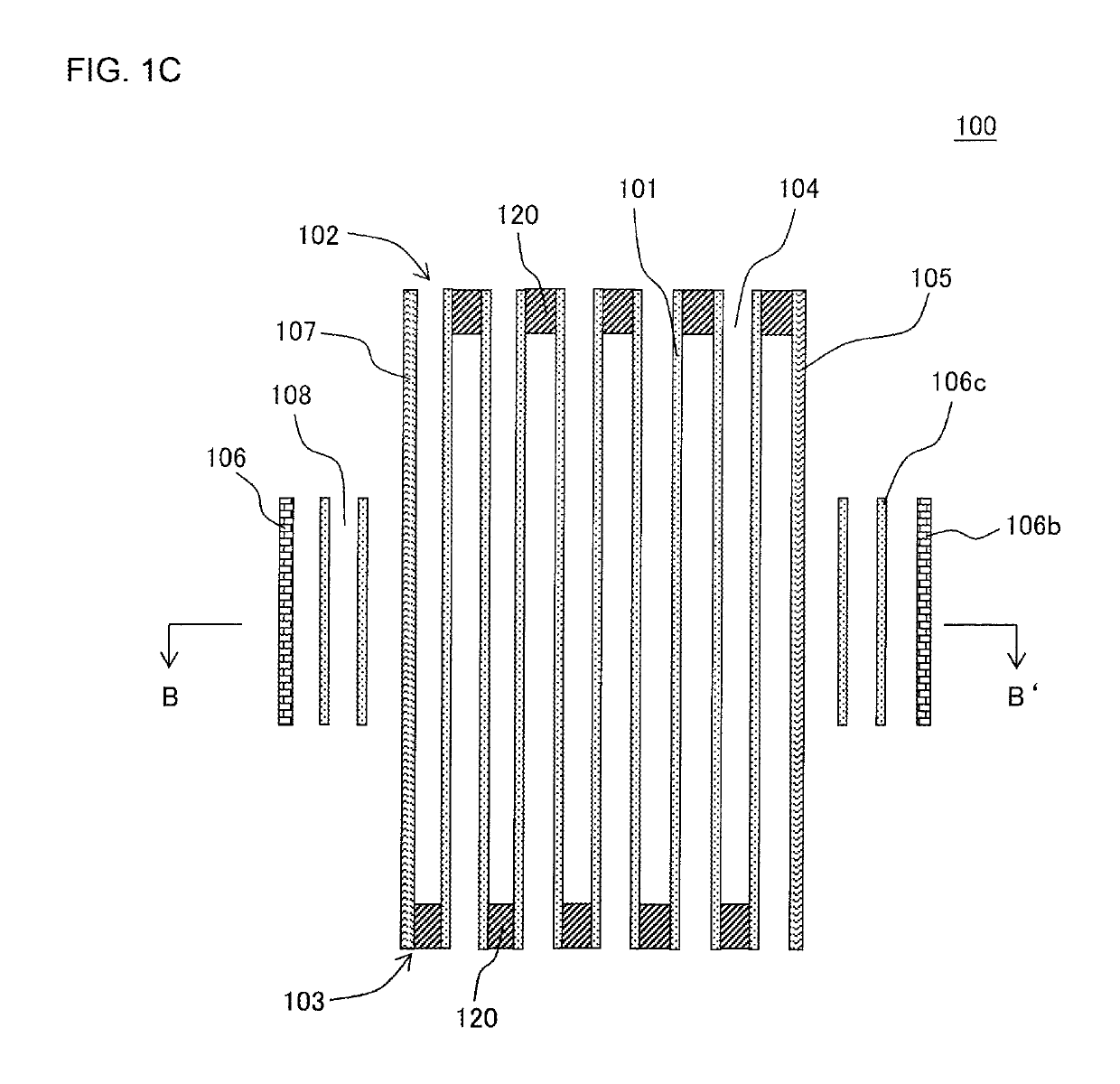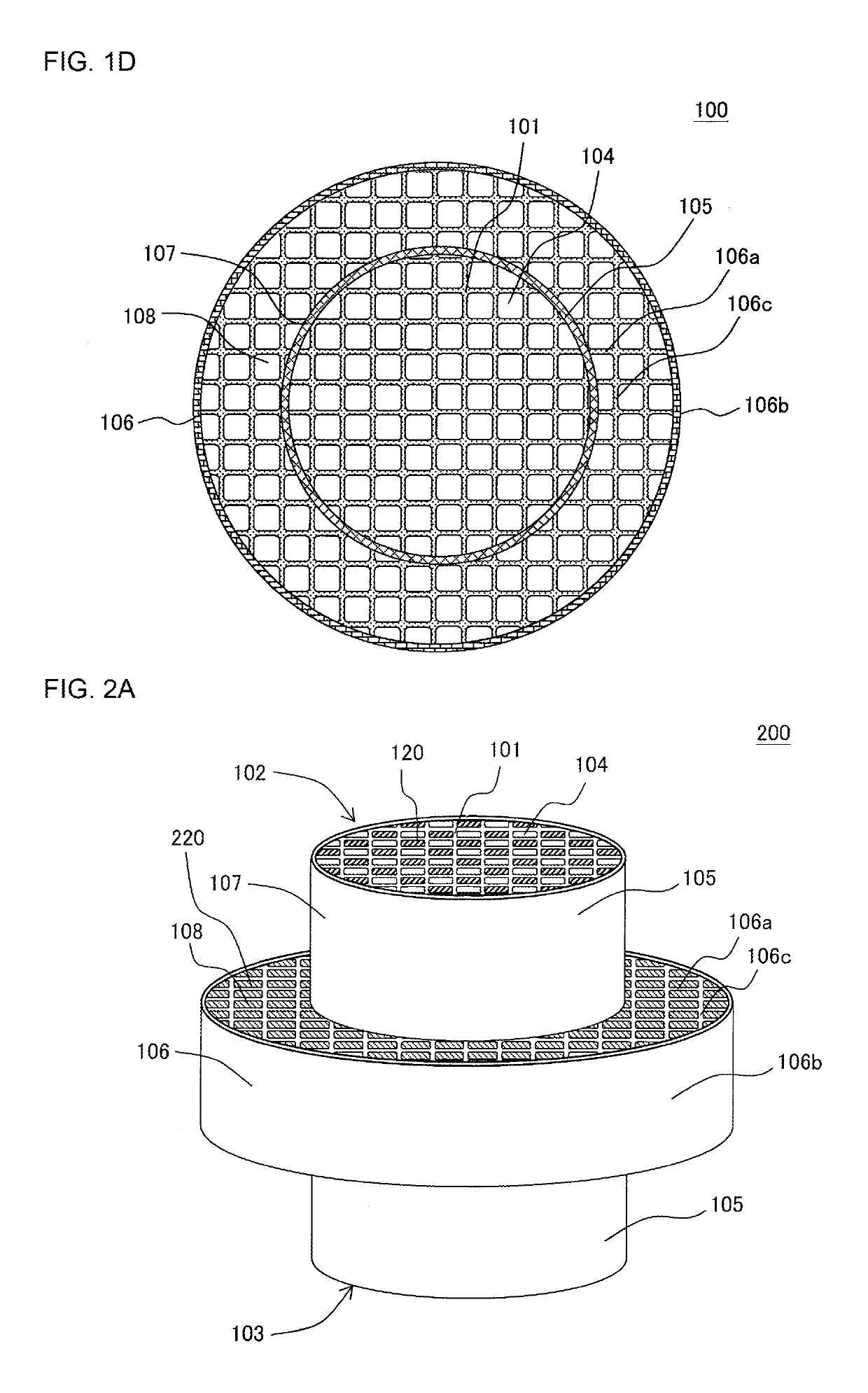Honeycomb structure
a honeycomb and structure technology, applied in the field of honeycomb structure, can solve the problems of shifting difficulty in acquiring the isostatic strength of the honeycomb structure, and damage to the honeycomb structure, and achieve excellent thermal shock resistance, effective inhibiting the shift of the honeycomb structure, and excellent thermal shock resistance
- Summary
- Abstract
- Description
- Claims
- Application Information
AI Technical Summary
Benefits of technology
Problems solved by technology
Method used
Image
Examples
example 1
[0085](Honeycomb Structure)
[0086]To 100 parts by mass of a cordierite forming raw material, there were added 13 parts by mass of a pore former, 35 parts by mass of a dispersing medium, 6 parts by mass of an organic binder and 0.5 part by mass of a dispersing agent, respectively, followed by mixing and kneading, to prepare a kneaded material. As the cordierite forming raw material, alumina, aluminum hydroxide, kaolin, talc and silica were used. Water was used as the dispersing medium, cokes having an average particle diameter of 1 to 10 μm were used as the pore former, hydroxypropyl methylcellulose was used as the organic binder, and ethylene glycol was used as the dispersing agent. Particle diameters and an amount of the pore former were controlled to control pore diameters and a porosity of partition walls.
[0087]Next, the kneaded material was extruded by using a predetermined die, to obtain a honeycomb formed body in which a honeycomb precursor having a quadrangular cell shape and ...
examples 2 to 9
[0107]In Examples 2 to 7, the procedure of Example 1 was repeated except that a thickness (mm) of partition walls, a porosity (%) and an average pore diameter (μm) were changed as shown in Table 1, to prepare honeycomb structures. On the other hand, in Examples 8 and 9, the procedure of Example 1 was repeated except that a length of each honeycomb structure and a length of each supporting bulge were changed, to prepare honeycomb structures. In Example 8, the length of the honeycomb structure was set to 152 mm and the length of the supporting bulge was set to 2 mm. In the honeycomb structure of Example 8, a value of “S2 / (S1+S2)” was 0.01. In Example 9, the length of the honeycomb structure was set to 91 mm and a length of a supporting bulge was set to 75 mm. In the honeycomb structure of Example 9, a value of “S2 / (S1+S2)” was 0.8.
PUM
| Property | Measurement | Unit |
|---|---|---|
| porosities | aaaaa | aaaaa |
| pore diameters | aaaaa | aaaaa |
| thickness | aaaaa | aaaaa |
Abstract
Description
Claims
Application Information
 Login to View More
Login to View More - R&D
- Intellectual Property
- Life Sciences
- Materials
- Tech Scout
- Unparalleled Data Quality
- Higher Quality Content
- 60% Fewer Hallucinations
Browse by: Latest US Patents, China's latest patents, Technical Efficacy Thesaurus, Application Domain, Technology Topic, Popular Technical Reports.
© 2025 PatSnap. All rights reserved.Legal|Privacy policy|Modern Slavery Act Transparency Statement|Sitemap|About US| Contact US: help@patsnap.com



